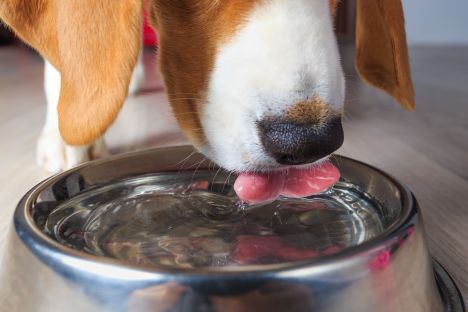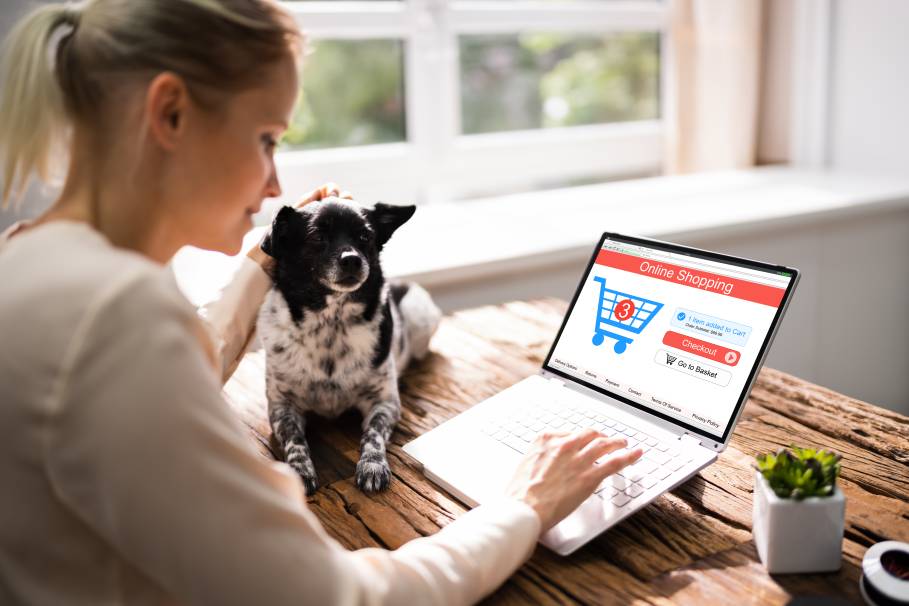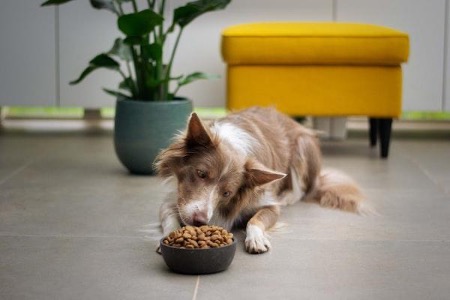Connect with a verified veterinarian in minutes. Licensed vets are available 24/7 to answer your questions. No need to worry about your furry family member.
A dog is completely independent to satisfy its water needs, which are important. Provided that he always has fresh, clean water at his disposal. Water keeps your dog’s essential electrolytes plentiful, which allows their circulation, digestion and bowel movements to function smoothly. As a dog owner, one must know a dog’s water needs.
Water needs according to weight
With a body composed of 80% water, the dog needs to drink throughout the day. This allows him to regulate his body temperature, protect his organs, joints and tissues, better digest, eliminate waste, etc. With the exception of puppies who, during the growth period, drink almost twice as much as adult dogs, the latter need a certain amount of water daily according to their weight.
According to bienchien.fr, dog needs 1 ounce of water for each pound of their body weight per day. Concretely, it is 60 to 70 ml per kilo. A dog weighing 3 kg will therefore need 180 to 220 ml, a 10 kg animal 600 to 700 ml, a 30 kg dog 1.80 to 2.20 liters. As for an 80 kg dog, he will drink more than 5 liters a day. The variation depends on several factors including dog food: the kibbles only provide a little water, the household ration a little more, and industrial food is composed of at least 70% water.
The age of the dog is also important: the puppy, as we have seen, drinks more but the older dog feels less thirsty. In any case, it is essential that the dog always has fresh, clean water available to it, which the owners will change at least every twelve hours.
Special cases
In some special cases, dogs need more water than usual.
If it’s very hot
Dogs don’t sweat like us in summer. Water will therefore play a major role in regulating its body temperature. As soon as it starts to get hot, you can install several bowls of fresh water that is changed more often in the house. On a walk, regular breaks will be required. In the car, you can use an atomizer or a wet cloth.
Pregnant females
Pregnant females also need more water, especially in the second month. Their metabolism is then more active. This situation will continue throughout the breastfeeding period when the water, in addition to that which the female dog normally needs, will promote lactation.

Review symptoms, medications & behavior to keep your pets healthy with a Vet Online in just minutes.
Ask a Vet Live NowWhat to do if your dog drinks too much or not enough
Except in the event of strong heat or if he has done a lot of exercise, a dog should not drink more than 100 ml per kg per day. Measuring the amount of water ingested by your animal is a simple exercise to carry out over two or three days: just fill its bowl with the help of a measuring cup and subtract with the same container of water you change.
If a dog drinks too much
Still, a dog that drinks too much is a dog that suffers from a condition called polydipsia. But if he drinks so much, he often urinates more and this can signal different diseases such as diabetes or kidney failure. A dog that spends its time drinking can also suffer from potomania, a behavioral disorder caused by high anxiety.
If a dog does not drink enough
Conversely, a dog who does not drink enough – while our companions manage their consumption themselves – is certainly a difficult dog. There is something wrong! It may be the bowl, the freshness of the water (change it more often) or even its taste (try with low mineralized spring water). Flavoring the water or even making ice cubes with gravy is a good way to entice a dog to drink more; they are fond of it!
Be aware of dehydration
The biggest risk to dogs is dehydration. The signs that your companion would then present are sunken eyes, a dry muzzle, just like the nostrils, a lack of appetite and apathy. It is possible to check that your dog is not dehydrated by doing the “skin fold test”. Lightly pinch the dog’s skin. If it snaps back into place right away, the dog is not dehydrated; if it takes a few seconds, there is onset of dehydration; longer, rush to the vet urgently. The vet will administer fluids intravenously, but also verify by additional examinations that the dehydration is not the symptom of a more serious illness.
Connect with a verified veterinarian in minutes. Licensed vets are available 24/7 to answer your questions. No need to worry about your furry family member.

Tom
Tom has always loved to write since he was little - he wanted to be either a writer or a veterinary doctor, but he ended up being a professional writer while most of his works are based on animals. He was born in San Francisco but later moved to Texas to continue his job as a writer. He graduated from the University of San Francisco where he studied biotechnology. He is happily married and a soon to be father!
Review symptoms, medications & behavior to keep your pets healthy with a Vet Online in just minutes.
Ask a Vet Live Now




